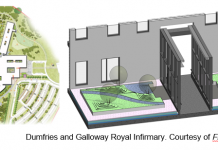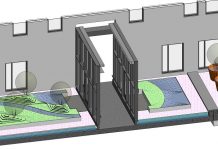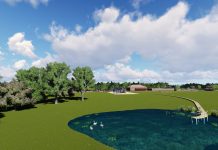Mike Shilton, Chair of the Landscape Institute’s BIM Working Group, announces the imminent release of their BIM for Landscape guide which is intended to provide signposting for those wishing to become BIM compliant
The Landscape Institute is excited to be publishing ‘BIM for Landscape’ in late May – the first book of its kind to focus on the implementation of BIM processes in landscape and external works. It is intended to prepare practitioners and practices to meet the challenges and benefit from the rewards of working in a BIM environment. It will be a guide for those wishing to implement BIM, and the book has been designed in three sections:
- Introduction and how to prepare for BIM;
- BIM Implementation;
- Technological aspects of BIM.
It is not quite a beginners, intermediate and advanced guide, but is based on a similar process. The book will not be a BIM Bible either, but will provide signposting to the key documents and processes to consider.
BIM Level 2 is a stepping stone and the start of something that will mean the UK can become a world leader in this field. The process will bring the benefits of virtual simulation and prototyping into landscape architecture, and the UK will be the world leader in this field. BIM may not be for everyone. Level 2 BIM is currently only required on all publicly procured projects, but this may change, and for landscape architects, many aspects of their work may not require full BIM compliance.
Whether to adopt BIM or not is a business decision and will be based on current and future works and the demands of clients. However, many practices may seek a competitive edge by proactively implementing BIM.
By publishing ‘BIM for Landscape,’ the Landscape Institute is trying to help practices make an informed business decision as to whether they should adopt BIM or not. Some may think it’s not for them which is fine. Many large, medium and small companies may take that view, but the government may demand BIM on all future contracts. Indeed, discerning clients that require more cost effective solutions and better performing landscapes are realising the benefits of BIM and are increasingly demanding BIM as a pre-requisite on contracts.
For those working with a BIM enabled architect or engineer, it is likely that a pre-qualification to tender would be that you are working, or at least outputting, in a BIM compliant format. Conversion to BIM enabled platforms from traditional deliverables may incur additional expenses and training, but if your competitor is achieving the targeted 20% savings BIM can deliver and you are producing 20% uplifts by post-processing your design, it will become more difficult to compete.
Following the publication of ‘BIM for Landscape’, the Landscape Institute will host an event in June to explore in detail the aspects raised in the publication and also the long-term future of the profession with the opportunities and challenges that new technology will present.
Watch this space as further details will be announced. ■
. . . . . . . . . . . . . . . . . . . . . . . . . . . . . . . . . . . . . . . . . . . . . . .
Mike Shilton
Chair, Landscape Institute BIM Working Group, and Product Director at Keysoft Solutions
Tel: 0207 685 2640











BIM, and sustainable landscape architecture, will never succeed until there is appropriate education of, and leadership by, real property owners.
Life-cycle management of the built environment requires the implementation of LEAN best management practices. And, quite frankly, real property owners are clueless in this regard.